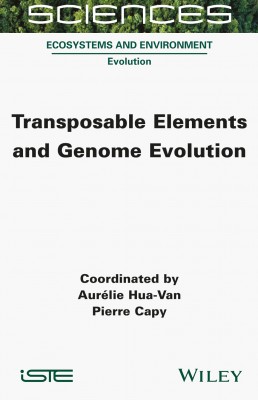
Since their discovery by Barbara McClintock in the mid-20th century, the importance of transposable elements in shaping the architecture, function and evolution of genomes has gradually been unveiled.
These DNA sequences populate nearly all genomes and are viewed as genomic parasites. They are mobile, capable of proliferating within genomes and also commonly travel between species.
These elements are mutagenic and are responsible for several human genetic disorders, but they also constitute a major source of genetic diversity. Some insertions have beneficial effects for the host and are selected for, giving rise to significant evolutionary innovations. Their dynamics within genomes are intricate, as are their interactions with other genome components. To limit their proliferation, the genome has evolved sophisticated defense mechanisms.
While researchers commonly use these elements as genetic tools, their identification in newly sequenced genomes remains a challenge due not only to their extensive diversity, but also their large copy numbers.
1. Transposable Elements in Eukaryotes, Aurélie Hua-Van.
2. Prokaryotic Transposable Elements, Alessandro M. Varani, Karen E. Ross and Mick Chandler.
3. Transposable Elements and Human Diseases, Benoît Chénais.
4. The Silencing Mechanisms Inhibiting Transposable Element Activity in Somatic and Germ Cells, Chantal Vaury.
5. Transposable Elements and Adaptation, Marta Coronado-Zamora and Josefa González.
6. Domestication (Exaptation) of Transposable Elements, Christopher Ellison.
7. Horizontal Transfers and Transposable Elements, Emmanuelle Lerat.
8. Genome Invasion Dynamics, Arnaud Le Rouzic and Aurélie Hua-Van.
9. The Ecology of Transposable Elements, Pierre Capy, Christian Biémont and Cristina Vieira.
10. Transposable Elements as Tools, Chengyi Song and Zoltán Ivics.
11. Genomic Characterization of Transposable Elements: Databases and Software, Gabriel Da Luz Wallau.
Aurélie Hua-Van is Professor of Biology at Paris-Saclay University, France. She teaches in various domains such as genetics, evolution, life origin and bioinformatics. Her research focuses on eukaryotic transposable elements evolution and dynamics, through experimental evolution and genomics.
Pierre Capy is a former Professor of Biology at Paris-Saclay University, France. He taught evolutionary biology, quantitative genetics and genome plasticity, and always tried to create bridges between ecology and molecular biology. It is within this context that his research on transposable elements is placed.